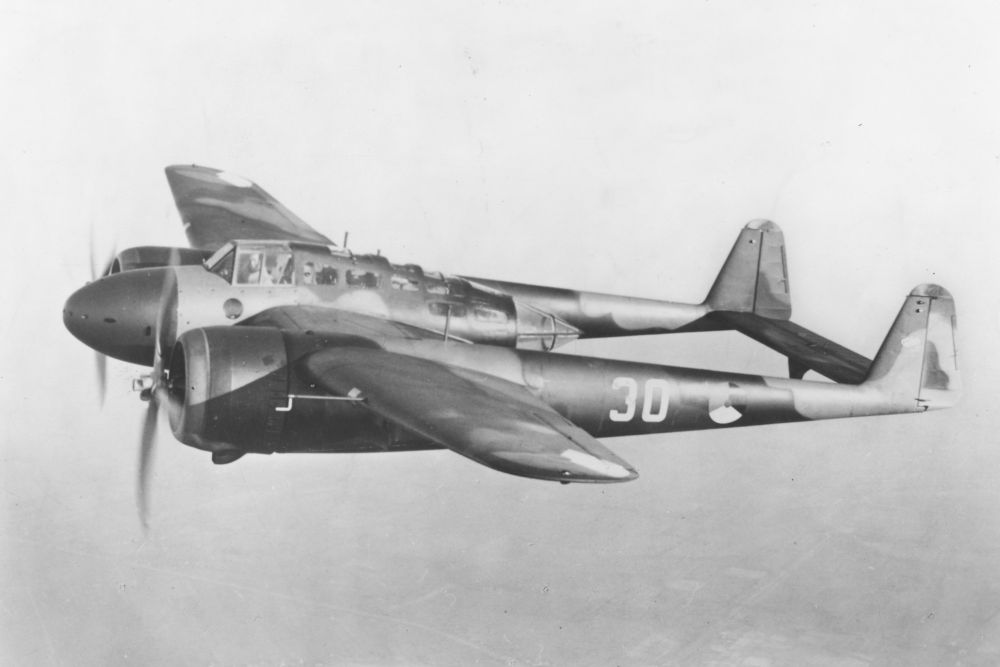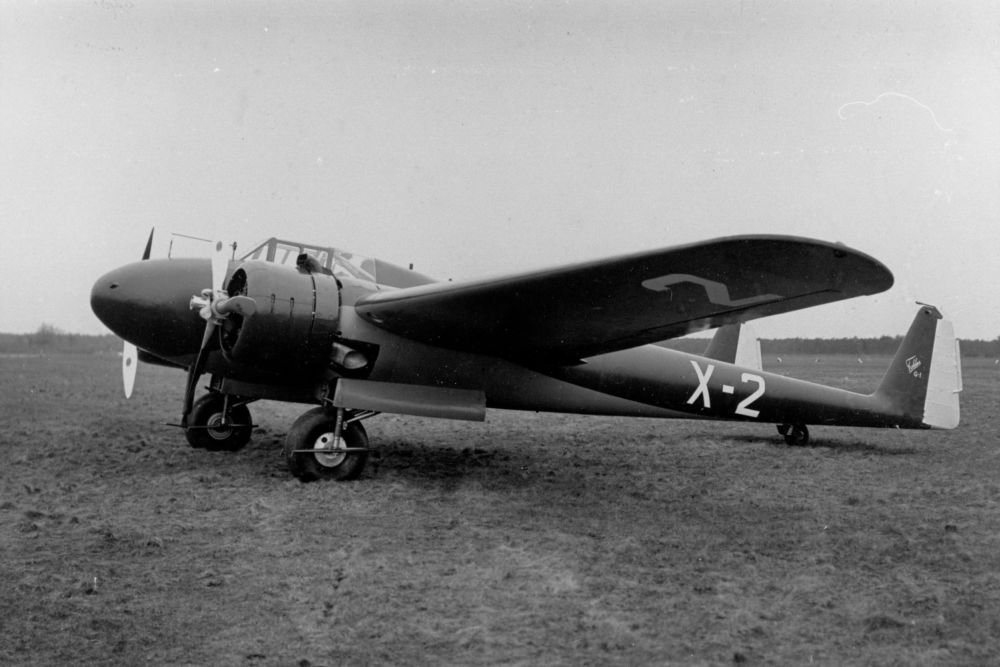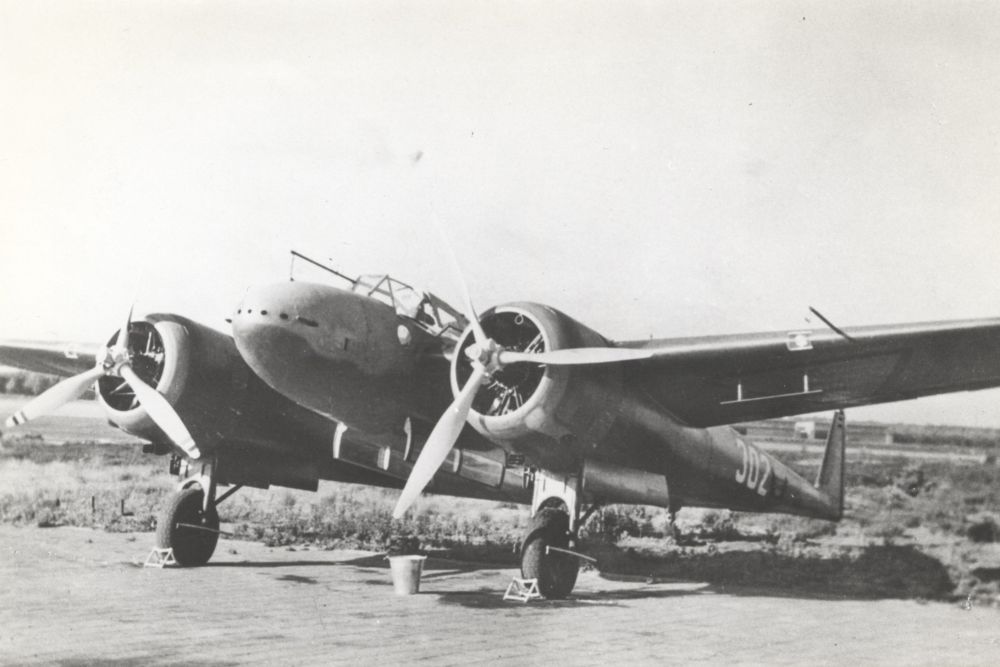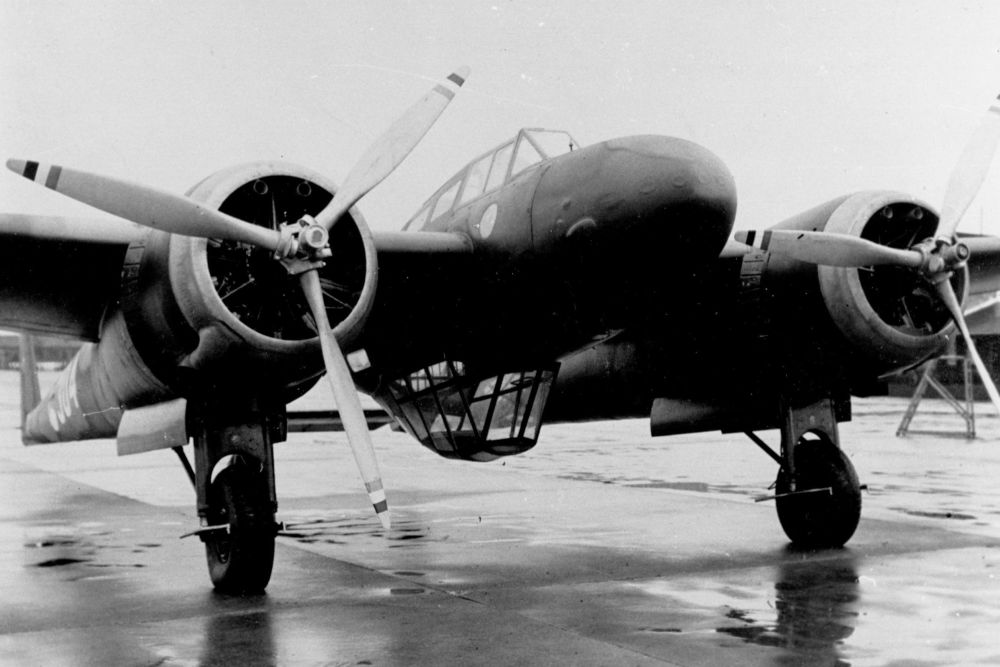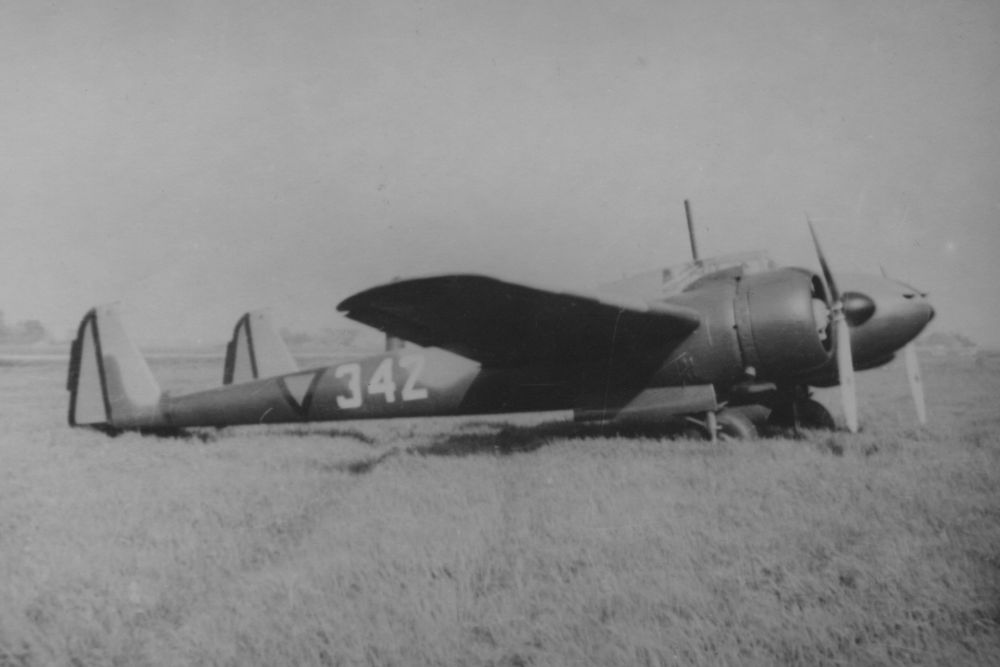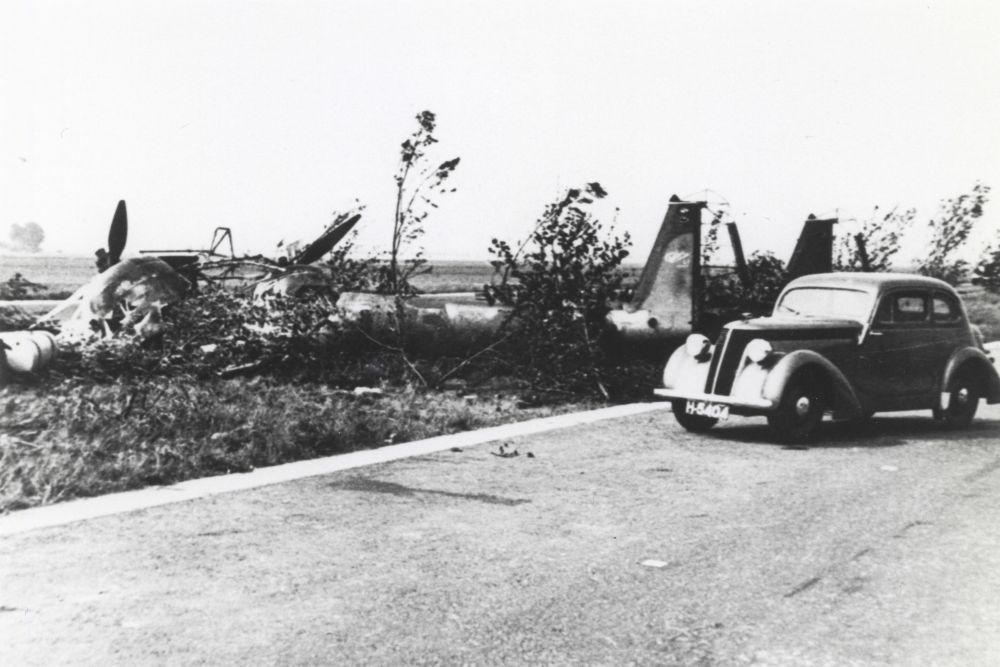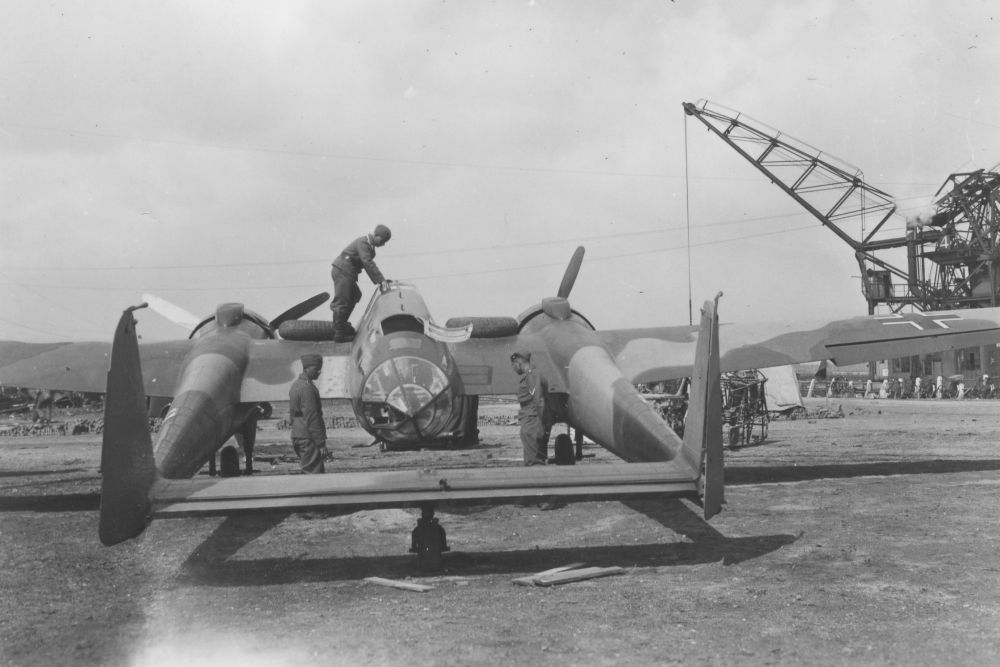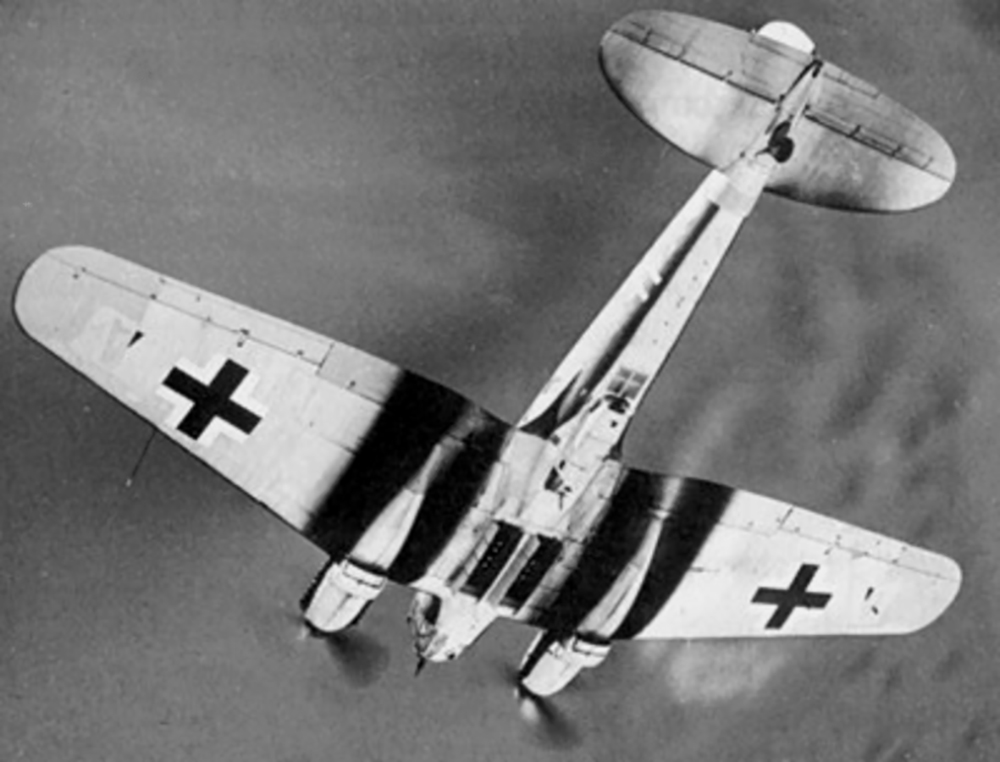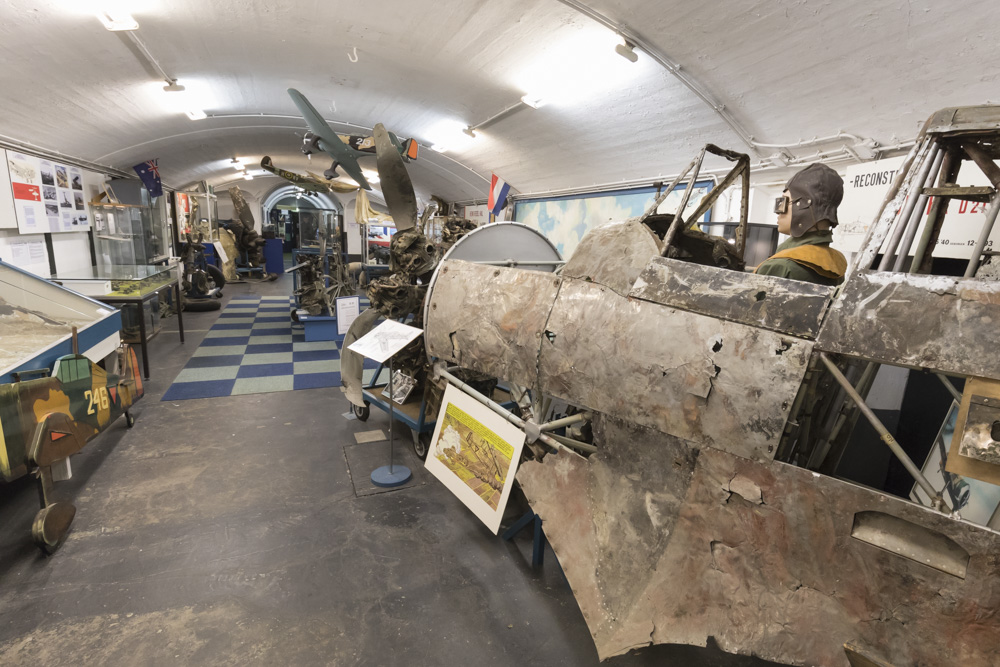Introduction
On his own initiative Fokker built a, for those days, very modern looking aircraft in 1936. The twin boom tail, the short fuselage and the two engines were characteristic. Though it was intended to be a fighter aircraft, the machine got the type casting of "fighter cruiser" in order to express the extra characteristics compared to a fighter. It was a true cruiser. Even when the aircraft had not yet made its maiden flight, it was the focus of the attention at the Paris Air Show of 1936 because of its appearance and heavy armament (two 23 mm Madsen guns and two 7.9 mm machine guns in the nose cone and a flexible 7.9 mm machine gun in the rear of the fuselage).
 Klik hier voor de Nederlandstalige versie van dit artikel
Klik hier voor de Nederlandstalige versie van dit artikel
Definitielijst
- cruiser
- A fast warship with 8,000 – 15,000 ton displacement, capable to perform multiple tasks such as reconnaissance, anti-aircraft defence and convoy protection.
Development
In only half a year’s notice, which was a record time, the design team of Fokker succeeded in developing a fighter which was originally intended to serve the French market. It was common knowledge that Koolhoven was targeting that market and Fokker tried to join that effort. The project which had been made on the basis of French specifications did not earn the interest of the French at all. The factory itself however did recognize its potential and project 129 was further developed at its own cost. It took until March 16th, 1937, before the prototype, called X-2, became airborne. It appeared to be an excellent aircraft that could positively be compared with its contemporaries. The selected armament comprised originally the two Madsen 23 mm guns and two 7.9 mm Madsen machine guns in the nose cone and a Madsen machine gun in the rear of the cockpit/fuselage. At first the aircraft presented few problems but soon it appeared that the Hispano Suiza engines presented teething trouble by overheating. At last these problems could only be solved by selecting another engine manufacturer. The final choice was made for the Pratt & Whitney SB-4G Wasp Junior. The prototype thus equipped received strangely enough the same nomenclature X-2.
In the meantime the Dutch Army Air Department [Luchtvaartafdeling], LVA became interested in the aircraft. The Netherlands however had made a choice for the Bristol Mercury VII engine to be the standard for all its aircraft. That made it necessary to adapt the original design of the G.1. The shape of the cowlings and the tail booms was changed as the engines had a larger diameter. The aircraft also required a somewhat longer landing gear to create sufficient propeller ground clearance. Also the prototype of this design was called the X-2. The result was more than satisfactory for the LVA.
No G-1 has been saved for the posterity. Although some remnants have been found, only the full size replica in the Air Force Museum in Soesterberg is the only tangible proof of an excellent aircraft design.
Type overvieuw
| Fokker G.1 prototype |
prototype FD-322 |
1 |
| Fokker G.1 Mercury |
Fokker III-J, Mercury VI-S-engine |
12 |
| Fokker G.1 Wasp |
production Pratt & Whitney SB4G Wasp Jr.-engine |
36 |
Fokker G.1 Mercury
The Netherlands ordered 36 aircraft for the LVA. These differed from the original design because of its somewhat larger measurements, different engines (Bristol Mercury VII) and Browning armament of eight 7.9 machine guns in the nose cone and a similar flexible one in the rear. The aircraft was designed to carry up to 400 kilos of bombs.
From 1938 onwards the 36 aircraft entered into service with registration numbers 300 up to and including 335. They were distributed between the 3rd and 4th JaVa [ Fighter Division] (JachtVliegtuigAfdeling). Although the aircraft were originally designed to operate a crew of three, only the first four have been delivered in that configuration. Soon the middle seat was removed. The third crewmember was mainly intended for the role of the aircraft in the bomber configuration. It had already been decided not to use the G.1 for that purpose.
During the short period of utilization of the G.1 a number of variants has been developed as trials. Denmark showed a lot of interest in the G.1 but intended to use the aircraft also as a dive bomber. In order to try this concept the 302 was equipped with air brakes comparable to those applied to the Junkers Ju 87 and was consequently extensively tested. Next to Denmark also pilots from Finland, Sweden, Belgium and Turkey tested this aircraft. But a practical application has never been reached. In order to use the G.1 as a scout, an observation copula was installed in the 304 underneath the fuselage, which was called "the bath tub". However this was not a success. Nevertheless Sweden ordered twelve such copulas when it ordered the G.1.
Definitielijst
- Browning
- American weapon’s designer. Famous guns are the .30’’ and .50’’ machine guns and the famous “High Power” 9 mm pistol.
Fokker G.1 Mercury Technical data
| Type: | Fokker G.1 "Mercury" |
| Task: |
Fighter cruiser |
| Crew: |
2 |
| Wing span: |
17,16 meters |
| Wing surface area: |
35,70 m2 |
| Length: |
10,89 meters |
| Height: |
3,35 meters |
| Weight: |
Empty weight: 3,360 kg Max. take off weight: 4.800 kg |
| Engine: |
2x Bristol Mercury VIII 830 pk (? kW) elk |
| Speed: |
Max. speed: 475 km/u Cruise speed: 356 km/u |
| Range: |
1.410 km |
| Operation ceiling: |
9.300 meters |
| Weapons: |
8x 7,9mm. Browning FN
machineguns (nose) 1x 7,9mm. Browning FN machinegun (aft in cockpit) |
| Production: |
36 |
Definitielijst
- Browning
- American weapon’s designer. Famous guns are the .30’’ and .50’’ machine guns and the famous “High Power” 9 mm pistol.
- cruiser
- A fast warship with 8,000 – 15,000 ton displacement, capable to perform multiple tasks such as reconnaissance, anti-aircraft defence and convoy protection.
Fokker G.1 Wasp
Next to the Netherlands also countries like Spain, Finland, Denmark and Sweden placed orders. These were all of the same design of the prototype; the only difference was that they choose different engines. For their configuration finally they al selected the Pratt & Whitney SB-4G Wasp Junior, which had been tested on the second prototype. This model was completely similar to that prototype. Although the armament that was installed consisted of four 7.9 mm M-20 FN Browning machine guns in the nose cone and a fifth in the rear.
The first series that was ordered consisted of 26 aircraft for Spain. These aero planes would be supplied through France and Estonia, but when they were built, the Spanish Republic had already been terminated. Estonia had planned to take up the order. During the Dutch mobilization in August 1939 the ten aircraft that were ready were held back in the Netherlands and a hectic research was started to equip them with the appropriate armament in order to prepare them for entering into service. Finally four of these aircraft could participate in the air battle that started on May 10th 1940. The remainder would be captured undamaged by the Germans.
Definitielijst
- Browning
- American weapon’s designer. Famous guns are the .30’’ and .50’’ machine guns and the famous “High Power” 9 mm pistol.
- mobilization
- To make an army ready for war, actually the transition from a state of peace to a state of war. The Dutch army was mobilized on the 29 August 1939.
Fokker G.1 Wasp Technical data
| Type: | Fokker G.1 "Wasp" |
| Task: |
Fighter cruiser |
| Crew: |
2 |
| Wins span: |
17,15 meters |
| Wing surface area: |
35,70 m2 |
| Length: |
10,30 meters |
| Height: |
3,37 meters |
| Weight: |
Empty weight: 3,150 kg Max. take off weight: 4.400 kg |
| Engine: |
2x Pratt & Whitney SB4G Wasp Jr. 750 pk (? kW) each |
| Speed: |
Max. speed: 475 km/u Cruise speed: 356 km/u |
| Range: |
1.580 km |
| Operation ceiling: |
9.300 meters |
| Weapons: |
4x 7,9mm. Browning FN
machineguns (nose) 1x 7,9mm. Browning FN machinegun (aft in cockpit) |
| Production: |
at least 26 |
Definitielijst
- Browning
- American weapon’s designer. Famous guns are the .30’’ and .50’’ machine guns and the famous “High Power” 9 mm pistol.
- cruiser
- A fast warship with 8,000 – 15,000 ton displacement, capable to perform multiple tasks such as reconnaissance, anti-aircraft defence and convoy protection.
Other foreign interest
Next to Spain also Finland had shown interest, but because in Finland there was a large problem with the availability of the engines, they never placed an order. But the Danes ordered a batch on 20 January 1939. They wanted 12 Mercury types with air brakes and armed with two 20 mm guns and two 7.9 mm machine guns in the nose cone. The 12 aircraft have been shipped in parts to Denmark. When the Germans invaded Denmark, only one was being assembled. All of them have surely been captured by the Germans. Just before the German invasion of Denmark the order had been increased with another 24 aircraft. These have never been manufactured.
Another country that finally placed an order, was Sweden. This country ordered 18 Mercury types including the infamous 12 "bath tubs". These would receive the nomenclature Fokker S-13. Not a single copy has ever been delivered. Also Estonia was interested. Basically they wanted to order six aircraft but the order was recalled later on. They were also interested in the aircraft that were intended to be delivered to Spain which delivery had already been engineered to take place via Estonia [to circumvent political implications during the Spanish civil war. FB]. But because of the mobilization situation in the Netherlands this never worked out. Other countries that showed a certain level of interest were France, Belgium, Turkey, Hungary and Switzerland but for various reasons no orders were ever received.
Definitielijst
- mobilization
- To make an army ready for war, actually the transition from a state of peace to a state of war. The Dutch army was mobilized on the 29 August 1939.
- Spanish civil war
- Fierce and cruel civil armed conflict in Spain from 1936 to 1939 between left (from anarchic to liberal) and right (church, nobility and army). In 1936 the fascist-oriented general Franco started military uprisings. With the help of Hitler and Mussolini he beat the republicans who vainly were supported by the International Brigade.
The days in May 1940
On May 19th 23 Fokker G-1 Mercury could participate in the fighting. In Bergen [province of North Holland] 4th JaVa was on stand by with the 301, 304, 305, 308, 310, 317, 318, 321, 322, 325, 331, and 332. Also in Bergen the 313 and 317 were in the hangar for maintenance. The 302, 309, 311, 312, 315, 319, 328, 329, 330, 334 and 335 of the 3rd JaVa were stationed at airfield Waalhaven [near Rotterdam]. It is unknown where another number of G-1s were at the moment of the German invasion on the early morning of May 10th, 1940, and another number was stationed at a flying school or were at another airfield. The Wasps that were ready for delivery to Spain all had entered into service with registration numbers 341 up to and including 365. Only four of those were ready for air battle. The others were in various states of readiness in different locations all over the country.
In as far as the G-1s have participated in the fights, they have demonstrated an excellence performance and they could be compared with the best of the Germans fighters. Because of the unlucky positioning of the aircraft on the airfields, unfortunately all 12 Mercury types were lost on the ground. Nine aircraft of this type were lost in battle and one Mercury and a Wasp were lost due to an accident.
Luftwaffe
It cannot be stated with certainty how many G-1s have finally been captured by the Germans. It may be assumed that various types Mercury and Wasp have been landed undamaged in German hands. Also it may be taken for granted that a number of the Danish aircraft have ended up undamaged with the Germans . It is almost certain that some thirty aircraft have entered service with the Luftwaffe, but of about twenty further aircraft the ultimate fate is still unknown.
Germany used the G-1 mainly as test aircraft and training aircraft. With one of those test aircraft Messrs. Leegstra and Vos succeeded to escape to Great Britain on May 5th , 1941, during a daring raid. This aircraft has finally been destroyed by the harsh British climate being a test vehicle for the Miles aircraft factory. It is not completely known how the German Air Force allocated the German G-1 aircraft with the various units. In any case the Aircraft Flying Schools [Flugzeugführerschule] C8, C11 and ZS 1 have utilized the G-1.
Definitielijst
- Luftwaffe
- German air force.
- raid
- Fast military raid in enemy territory
Information
- Article by:
- Wilco Vermeer
- Translated by:
- Fred Bolle
- Published on:
- 29-02-2012
- Last edit on:
- 22-06-2024
- Feedback?
- Send it!
Related sights
Sources
- Stichting Fokker G.1 (Dutch foundation about the Fokker G-1)
